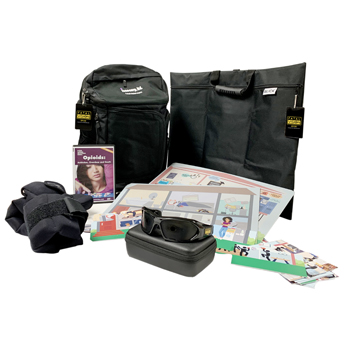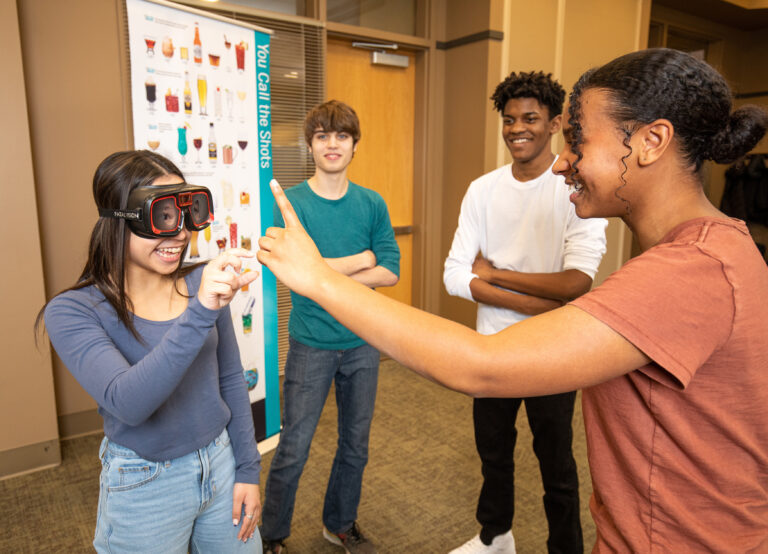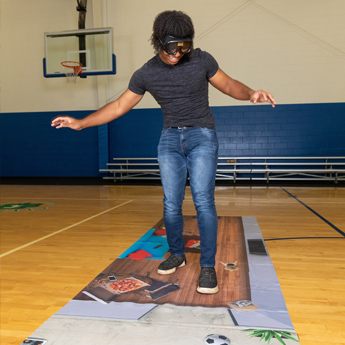
Driving Safety and Education Tools
Set your students up for success by utilizing the full driving safety toolkit available. Driving safety is an important part of any student or young adult education course. Safety

In recent years, the opioid crisis has escalated into a public health emergency, touching lives across all demographics and communities. Educators play a pivotal role in not only shaping the minds of students but also in safeguarding their well-being. Teaching about opioid overdose prevention is a challenging yet crucial task. It requires a delicate balance of imparting knowledge, fostering empathy, and empowering students to make informed choices. Here, we’ll explore effective ways to share vital opioid overdose prevention information with your students.
Begin by creating a safe and non-judgmental space for discussion. Acknowledge the sensitivity of the topic and emphasize the importance of empathy, respect, kindness, and confidentiality. It’s essential to approach this subject with care, ensuring students feel supported and understood.
One innovative method to convey the serious implications of opioid misuse is by using Fatal Vision Opioid Goggles. These goggles simulate the effects of opioid impairment, offering a practical experience of impairment for students and enhancing engagement and comprehension. Pairing the goggles with specially designed activities can significantly impact students’ understanding of the dangers of substance abuse. Students will experience different modes chosen from an app on a smartphone, including those representing divided attention failure, nodding out, and a combination of both. Additionally, the goggles feature a special film that simulates impaired contrast sensitivity, while the included arm weights symbolize the performance burden of impairment. Introducing this tangible and hands-on component to the lesson will enhance their comprehension and participation, allowing students to witness firsthand the impact of opioids.
Opioid abuse does not discriminate; it can affect individuals from any background, community, or walk of life. Sharing stories or case studies of people from diverse backgrounds can help dispel myths and stereotypes about substance abuse. This approach encourages a more inclusive and compassionate understanding of the issue, highlighting that addiction is a complex disease. Having first-hand stories can be an impactful way to talk with your students about opioid overdose prevention.
Incorporate current statistics to illustrate the severity of the opioid crisis. Data on overdose rates, the prevalence of prescription drug misuse among teenagers, and recovery stories can offer a sobering reality check while fostering a sense of urgency to take action. However, balance these statistics with messages of hope and recovery to keep a silver lining in the lesson.
A fundamental part of opioid overdose prevention education is understanding the science of addiction. Explaining how opioids alter brain chemistry and lead to dependence can help demystify the process of addiction. This knowledge empowers students to make informed decisions about drug use and fosters a more compassionate view towards individuals struggling with addiction.
Encourage open and ongoing dialogue about drug abuse and prevention. Allow students to ask questions, express concerns, and share their thoughts and feelings. An open-door policy fosters trust and ensures students know they have a supportive resource in their educators.
Teaching about opioid overdose prevention is a vital but complex task that requires sensitivity and commitment. By using a variety of tools, educators can make a significant difference in the lives of their students by showing them how to navigate the opioid crisis. Request a quote for products to address opioid use today.
Innocorp is the pioneering developer of Fatal Vision® Goggles and other experiential learning tools designed to educate on the dangers of impairment and promote risk prevention. Innocorp provides impactful, hands-on resources used globally by law enforcement, educators, and safety professionals to demonstrate the consequences of substance use, risky driving, and other dangerous behaviors.
We’d love to online chat! We are available Monday-Friday from 8am-5pm (CST):
Or schedule a time for a consultation:

Set your students up for success by utilizing the full driving safety toolkit available. Driving safety is an important part of any student or young adult education course. Safety

Use laughter with Fatal Vision Goggles as a learning tool to encourage participation and understanding. Incorporating engaging tools like Fatal Vision Impairment Simulation Goggles into educational settings can be a

Get ready for a great year with Fatal Vision’s innovative products. With injuries and fatalities caused by driving while under the influence of drugs or alcohol or driving while
CUSTOMER SUPPORT
Buy America Act
Contact
GSA Customers
Returns
Shipping
Warranties
My Account
Login
Create an Account
INNOCORP HEADQUARTERS
500 S Nine Mound Road
P.O. Box 930064
Verona, WI 53593-0064
800-272-5023 Mon-Fri 8-5 CT
608-848-5558 Fax
©2025 Innocorp. All Rights Reserved